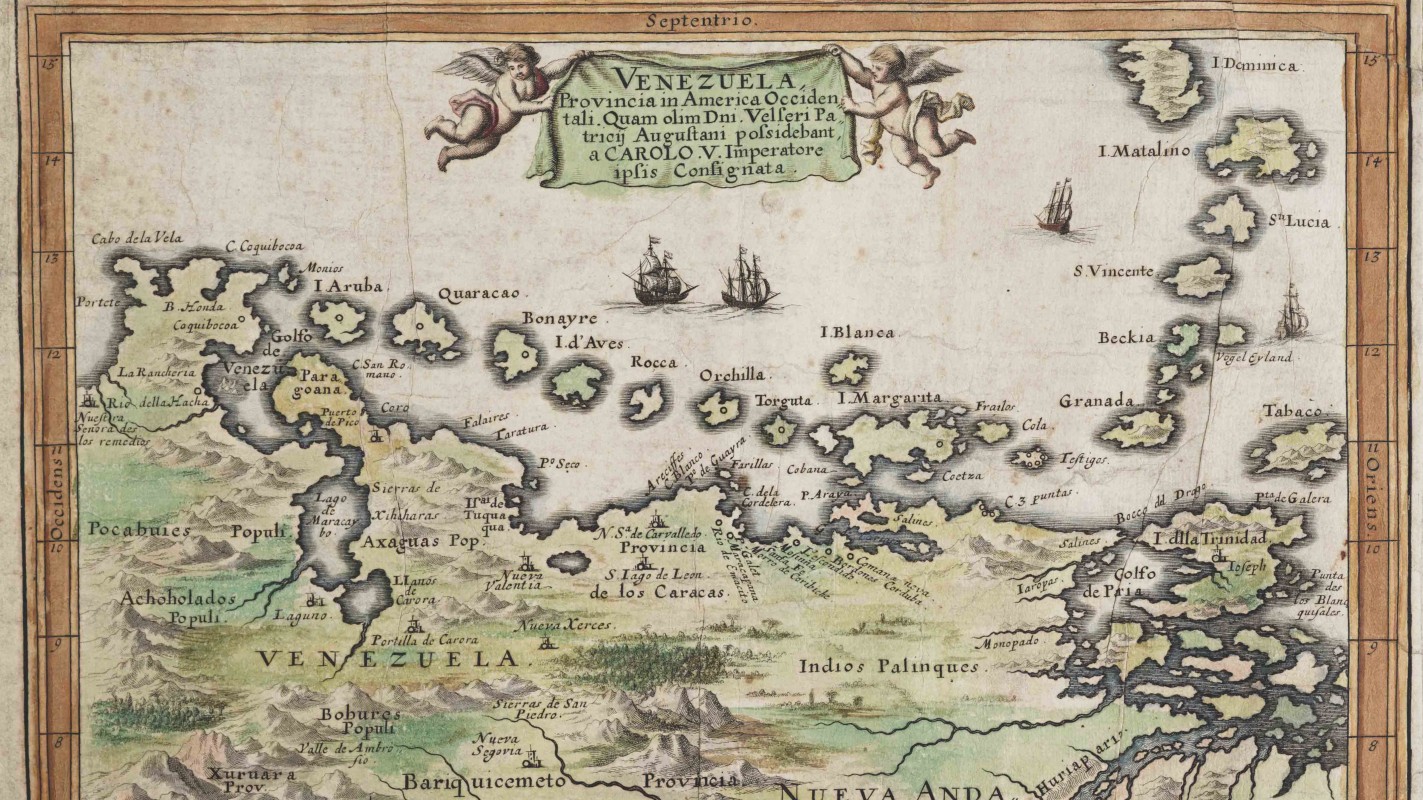German conquistadors: The forgotten rulers of Venezuela and their legacy

When you think of conquistadors, Germans probably aren’t the first group of people to spring to mind.
After all, the term is Spanish, and many of the nations that bore their mark are today Spanish-speaking. But in the 16th century, the Welsers — a prominent banking family from Augsburg, in what is now southern Germany — governed the Province of Venezuela. While their reign only lasted 30 years, the Welsers’ legacy persisted in cultural memory for centuries afterward, often to serve social or political purposes.
Binghamton University Associate Professor of Comparative Literature and the Director of the Latin American and Caribbean Area Studies Program Giovanna Montenegro’s new book, German Conquistadors in Venezuela: The Welsers’ Colony, Racialized Capitalism, and Cultural Memory, explores this often-ignored episode in the conquest and colonization of the Americas.
“I aim to bring to light the basic conditions of not only what drove the Welsers’ early merchant capitalism, and why it’s a racialized capitalism because it depended on enslaved Indigenous and African people for that labor, but what profits they gained from the slave trade,” she said.
Using a comparative and interdisciplinary approach, Montenegro chronicles the Welsers’ business expansion beyond banking to colonization and the slave trade in the Spanish Indies and the eventual failure of the colony. Her sources include legal documents granting colonization and slave-trade rights to complex financial transactions, as well as maps, literary texts, and poems and chronicles from the era.
Business and banking families of the day dealt primarily in the trade of textiles and spices, Montenegro said. An old-money family in the independent city of Augsburg, the Welsers’ trade links connected them with Venice, the present-day Low Countries, France, Spain and Portugal, by way of factors — people who would manage their business in these places. By the 1490s, the family business expanded into the burgeoning sugar trade on the island of Madeira and, later, into a sugarcane plantation on La Palma in the Canary Islands. These operations ultimately sparked their interest in going even further west — to the Spanish colonies in Hispaniola and the Americas.
To that end, the Welsers secured a series of contracts with Holy Roman Emperor Charles V, who was also the king of Spain. The contracts initially permitted voyages of exploration and conquest in the New World, and then authorized them to extract resources in both the East and West Indies.
“Soon after they began, the Welsers were given an early contract to trade in enslaved Africans, one of the earliest contracts to do so,” Montenegro said. “They also engaged in indigenous slavery, primarily in the circum-Caribbean area.”
That paved the way for their contract to govern what is now western Venezuela, issued in 1528; a clause specified that they needed to pacify part of the province.
Among their agents: German conquistador Nikolaus Federmann, who conducted expeditions in what is now Venezuela and Colombia. He went on to pen one of the first travel narratives of the region, detailing the conquest from 1529 to 1539. Federmann’s account included important ethnohistorical information about indigenous groups, some of whom were enslaved and sold by the Welsers. Published in 1557, the text, known as Indian History (Indianische Historia), languished in obscurity until it was translated into French and republished in the 19th century.
From its early days, the Welsers’ colony was plagued by internal strife. Part of that was due to a religious divide: While prominent Augsburg families remained Catholic, the Spanish typically viewed Germans with suspicion in the colonies, regarding them as Lutherans and heretics.
Spanish settlers also felt shut out from the possibilities of wealth, such as that accrued due to the enslaved indigenous labor provided by the encomienda system of plantations; rather than opening this system to others, the German governors focused their efforts on finding gold, enslaving the natives and exploiting natural resources. The Welsers also kept a monopoly on European trade, charging settlers premium prices for goods from Europe. And they weren’t always prompt with paying employees for their work.
“There’s even a man who sued the Welsers for back pay. That goes to court in Santo Domingo, and he actually ends up getting his money,” Montenegro recounted.
Cultural memory
The Welsers’ company goes bankrupt by the 17th century, but the family kept alive the narrative of colonization, literally preserving it in some copies of their family tree, including one preserved in the Library of Congress. Although created a century after the colony’s end, the latter record of the family’s genealogy includes a 17th-century map of Venezuela.
Augsburg’s colonial history was also enshrined in poetry and art, such as a 16th-century frieze celebrating the marriage of a Welser family member; it depicts the bride riding a giant lizard, accompanied by two Black men.
In the 19th century, Germany’s Second Reich decided that they wanted overseas colonies of their own, like the French and British; as a result, they began actively colonizing parts of what is present-day Tanzania and Namibia, as well as the South Pacific. The narrative of the Welser colony received new life to support these expansionist aims, and was celebrated again during the Third Reich of the Nazi era.
Today’s Germany, however, is trying to come to terms with this problematic past, according to Montenegro. There’s an ongoing discussion of street names and public monuments that celebrate this period that mirrors the one surrounding Confederate monuments in the United States, for example.
“It’s not something that’s spoken about in Latin American and German colonial history. My aim was to bring this episode into light, and to see the impact on cultural memory,” Montenegro said.
